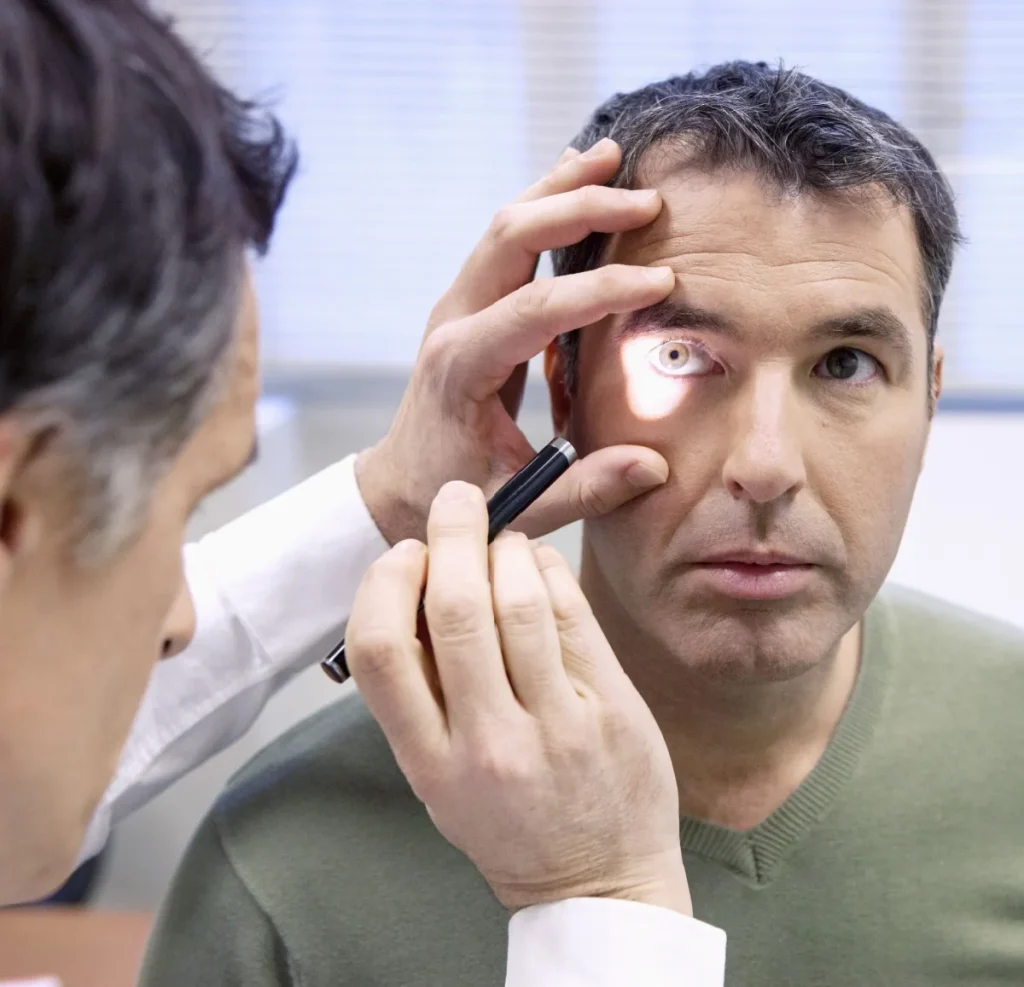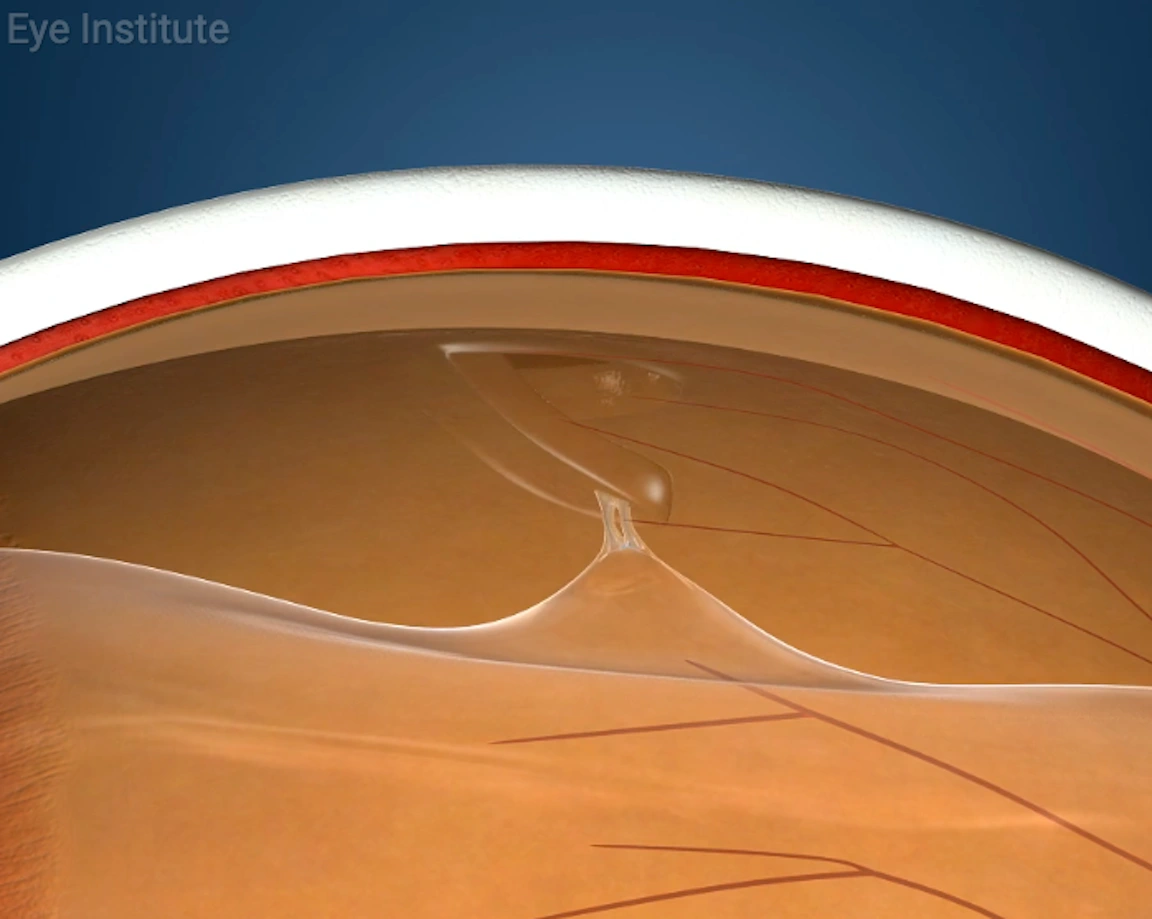
Retinal Tear
A tear in the retina can be a result of aging or after an injury or surgery to the eye. This condition can cause flashes or shadows in the vision and must be treated promptly before a retinal detachment occurs.

Understanding Retinal Tears
The retina is a light-sensitive layer of tissue that lines the inner surface of the eye. It is attached to the vitreous, the gel-like substance that composes most of the eye’s volume. As a result of the aging process, the consistency of the vitreous thins and its shape changes, sometimes causing it to pull away from the retina. This separation, known as posterior vitreous detachment (PVD), is a normal part of aging, but it can result in a retinal tear. Since, without treatment, a retinal tear can cause retinal detachment that may result in blindness, it is important for adults over the age of 50 to be vigilant about getting regular eye examinations.

What Causes Retinal Tears?
In addition to aging, there are other possible causes of a retinal tear, including blunt force trauma to the eye and complications of eye surgery. Patients who are nearsighted, or who have a family history of retinal tears, are at greater risk.
What Are The Symptoms of a Retinal Tear?
While a retinal tear does not usually cause pain, patients may experience the following symptoms:
- Flashes or floaters in the field of vision
- Reduction of vision
- Shadows or a curtain in the peripheral vision
Floaters or blocked areas of vision (curtains) may result from a retinal tear because as the vitreous pulls away from the retina, debris loosens and floats across the field of vision. Stress on the retina as the vitreous pulls away may also result in the production of images, such as flashing lights.
Floaters, which may appear as dots, circles, lines, clouds or webs, are common, experienced by about 70 percent of the population, and do not necessarily indicate a retinal tear. If floaters or flashes appear suddenly, however, there is cause for concern. This situation requires immediately medical consultation.
Diagnosing Retinal Tears
The sooner a retinal tear is diagnosed and treated, the less likely it will develop into a retinal detachment. Diagnosis of a retinal tear is made after a thorough medical eye examination and the performance of the following diagnostic tests:
- Dilated eye examination
- Ultrasound of the eye
- Fundus photography of the retina
- Visual acuity test
- Slit-lamp examination
- Electroretinogram
- Fluorescein angiography
- Ophthalmoscopy
Early detection, and prompt treatment, of a retinal tear can often prevent the retina from detaching, preventing permanent damage to the patient’s vision.
Retinal Tear Treatment Options
A retinal tear is treated with either a laser or cryotherapy procedure, or both, depending on the size and location of the tear. Either method of treatment is painless and is used to seal the retina to the wall of the eye. This prevents fluid from traveling through the retinal tear to potentially cause a detachment.
Repairing a tear in one part of the retina does not prevent a tear from developing in another area of the retina. Patients who have had a retinal tear should be especially careful about having their condition monitored. Everyone should have a regular eye examination to detect possible retinal tears at the earliest possible stage.
Schedule an Appointment
Contact us to schedule an appointment.
The doctors at Cincinnati Eye Institute have either authored or reviewed the content on this site.



























































































